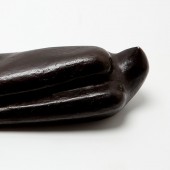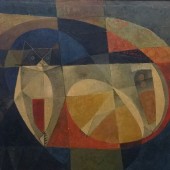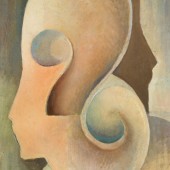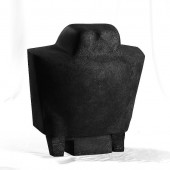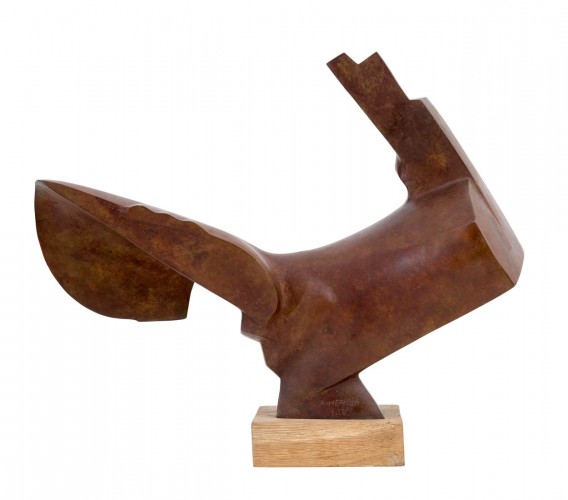
In this bronze sculpture of a rooster, the artist recasts the figure into simple lines typical of his abstract shapes, leaving the most prominent features of the rooster, its tail and feathered head. This technique recalls similar sculptures of other modernists, including Picasso’s cubist sculptures. The mastery of balance retains the natural form and stance of the rooster. Renowned for large-scale sculptures in granite, and smaller scale works in bronze and terracotta, Henein’s works often draw upon ancient and modern Egyptian sculptural techniques and forms.
Born to a family of silversmiths, Henein graduated from the School of Fine Arts in Cairo in 1953, and travelled to Upper Egypt to work at the Luxor Atelier. The region’s deep history of ancient Egyptian sculpture and architecture influenced the artist’s attention to materials and form. He studied at the Academy of Fine Arts in Munich and relocated to Paris in 1971 where he exhibited his artwork. In 1996, he returned to Egypt and founded the annual Aswan International Sculpture Symposium, an international workshop for sculptors. He established his home and studio at the village of Harraniya near Giza, known as a centre for traditional arts and architecture. Henein has received numerous awards for his work, which has been exhibited in Egypt, the Arab world, Europe, and New York’s Metropolitan Museum of Art.
في تمثال الديك البرونزي هذا، اختزل الفنان الشكل إلى خطوط مبسطة مشابهة لأسلوبه التجريدي المعتاد، تاركاً فقط سمات الديك البارزة، وهي الرأس والذيل. وتشبه هذه التقنية الأسلوب المستخدم في تماثيل مشابهة لفنانين من حركة الفن الحديث، بما في ذلك المنحوتات التكعيبية لبيكاسو. وبفضل براعة الفنان في ضبط المنحوتة، تمكن من المحافظة على الشكل الطبيعي للديك ووقفته. ويشتهر حنين باستخدام حجر الجرانيت في المنحوتات كبيرة الحجم، ومعدن البرونز والطين في المنحوتات الصغيرة، وغالباً ما يعتمد في كثير من أعماله على تقنيات وأشكال النحت المصرية القديمة والحديثة.
ولد حنين لعائلة من صاغة الفضة، وتخرج من مدرسة الفنون الجميلة في القاهرة عام 1953، وسافر إلى صعيد مصر للعمل في “مرسم الأقصر”. وأثار تاريخ المنطقة العريق في مجال النحت والعمارة المصرية القديمة انتباه حنين لناحية المواد والشكل. درس حنين في أكاديمية الفنون الجميلة في ميونيخ، وانتقل إلى باريس في عام 1971 حيث بدأ بعرض أعماله هناك. وفي عام 1996، عاد حنين إلى مصر وأسس “سمبوزيوم أسوان الدولي للنحت”، وهو عبارة عن ورشة عمل سنوية دولية للنحاتين. أسس حنين منزله والاستوديو الخاص به في قرية الحرانية بالقرب من الجيزة، والتي تشتهر بأنها مركز للفنون والعمارة التقليدية. تلقى حنين العديد من الجوائز على أعماله الفنية، والتي قد تم عرضها في مصر، والعالم العربي، وأوروبا، ومتحف المتروبوليتان للفنون في نيويورك.




